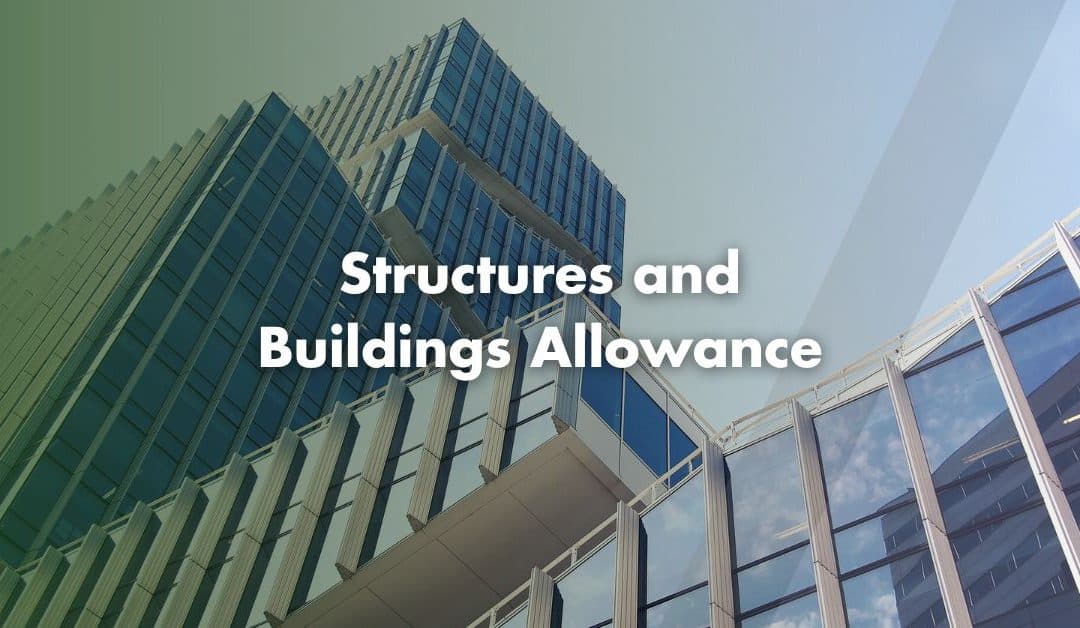The Structures and Buildings Allowance encourages investment in commercial infrastructure by allowing businesses to recover some of the costs spent on constructing, purchasing or improving non-residential properties.
What is the Structures and Buildings Allowance?
The Structures and Buildings Allowance allows businesses to claim tax relief on the cost of constructing or significantly renovating commercial buildings. From 1st April 2020 onwards, the claim rate is 3% per year on a straight-line basis, for a total of 33 years and 4 months. Before this date, the rate was 2% per year.
If your project began before April 2020, you may be eligible to claim an additional 1% retrospectively under transitional rules.
The allowance applies only to non-residential structures, such as offices, factories warehouses and retail units. Structures used as residences do not qualify. In mixed-use properties, you may only claim the Structures and Buildings Allowance for the non-residential portion.
Who Can Claim the Structures and Buildings Allowance?
To claim the Structures and Buildings Allowance, your business must meet the following criteria:
- Construction contracts must have been signed on or after 29th October 2018
- The structure must be brought into non-residential use
- You must hold a relevant interest in the property (e.g. as owner or long-term leaseholder)
- The structure must be used in a qualifying activity
Qualifying activities include trades, professions, property businesses (excluding residential lettings) and land-based operations such as farming, mining or infrastructure projects like toll roads and railways.
What Costs Qualify for the Structures and Buildings Allowance?
The Structures and Buildings Allowance covers specific types of capital expenditure, including:
- Architect and consultant fees
- Site preparation and demolition
- Physical construction work and materials
- Interior fitting-out costs
- Renovation and conversion expenses
You cannot claim for:
- The cost of purchasing land
- Planning permission and legal fees
- Landscaping or remediation work
- Fixtures and integral features (these may qualify under other allowances)
- Marketing, financing or other indirect costs
If you acquire a used building, you can claim Structures and Buildings Allowance if the previous owner provides an allowance statement that outlines the property details, use and qualifying construction costs.
How to Make a Claim
You must claim the Structures and Buildings Allowance through your tax return. You will also need an allowance statement to make the claim. This document must include:
- The property’s address and description
- The date of the earliest construction contract
- The total amount of qualifying expenditure
- The date the property was first used for a qualifying activity
If you are the first user, you must create this document. If you purchase a building, the seller must provide the allowance statement. Without out, HMRC may treat your qualifying expenditure as nil.
Can Tenants Claim the Structures and Buildings Allowance?
Yes.
Tenants can claim the Structures and Buildings Allowance under certain conditions:
- If they hold a lease of 35 years or longer and pay a substantial premium (typically two-thirds or more of the property’s value)
- If they incur qualifying construction or renovation costs themselves
This allows long-term tenants to benefit from the same tax relief as owners, especially if they invest heavily in improving the property.
What Happens When You Sell the Property?
Once you sell a building, you can no longer claim the Structures and Buildings Allowance. However, the buyer can continue claiming for the remainder of the allowance period, provided they use the building for a qualifying activity.
You must pass on the allowance statement to the new owner. You must also add the total amount of allowance you claimed to your disposal value when calculating Capital Gains Tax, potentially increasing tax liability.
Although there are no balancing charges or allowances, this rule ensures fairness in the overall tax calculation.
What If the Building Has Mixed or Changing Use?
If a structure is partly residential and partly commercial, only the non-residential part qualifies. You will need to fairly apportion the costs.
If a building changes to residential use or ceases being used for a qualifying activity, the Structures and Buildings Allowance claim must stop. If it later reverts to commercial use, you can resume claiming for the remaining allowance period.
Allowance Rates and Transitional Rules
Two main rates apply:
- 2% per year from 29th October 2018 to 31st March 2020
- 3% per year from 1st April 2020 onwards
If you started your project in the earlier period, you may qualify for an additional 1% under transitional rules.
Contact Us
We are not just accountants; we are Chartered Accountants with one of the most reputable and premium accounting bodies. We are registered and regulated by ACCA; so you can rest assured that you are in good hands. Knowing this, don’t hesitate to get in touch with us if you require assistance: Pi Accountancy | Contact Us
This article is for general informational purposes only and does not constitute legal or financial advice. While we aim to keep our content up to date and accurate, UK tax laws and regulations are subject to change. Please speak to an accountant or tax professional for advice tailored to your individual circumstances. Pi Accountancy accepts no responsibility for any issues arising from reliance on the information provided.

